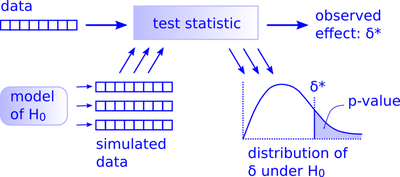🎲 Simulation Based Models

Introduction
In this set of modules we will explore statistical models using Random Number Generation and Monte Carlo Simulations. The purpose is identical to that with classical tests: to estimate the value of a statistical parameter ( average / variation / correlation / relationships ) with confidence.
Pedagogical Note
The basic concept here is the use of a simulation model, which is a computer representation of a problem that involves random variables. The chief advantage of a simulation model of a problem is that the simulation model can forecast the consequences of various management decisions before such decisions must be made. Simulation models are used in a very wide variety of management settings, including modeling of manufacturing operations, modeling of service operations where queues form (such as in banking, passenger air travel, food services, etc.), modeling of investment alternatives, and analyzing and pricing of sophisticated financial instruments. A simulation model is an extremely useful tool to help a manager make difficult decisions in an environment of uncertainty.
The fundamental way of thinking about Simulation-based Statistical Tests is shown in the Figure below.

This is not a new idea, but has been made possible only after the late 1970s or so, after compute power became adequate to mechanize what is suggested in the Figure.
Before we jump into Simulation-based Models, let us quickly listen to this short talk by John Rauser:
References
-
Bertsimas, Dimitris & Freund, Robert Michael, Data, Models, and Decisions: The Fundamentals of Management Science, Dynamic Ideas Press, 2004.
-
David Diez, Christopher Barr, Mine Çetinkaya-Rundel, Introductory to Modern Statistics, https://openintro-ims.netlify.app/
-
Allen Downey, There is Still Only One Test, 2016. http://allendowney.blogspot.com/2016/06/there-is-still-only-one-test.html
-
Allen Downey, More Hypothesis, Less Trivia, 2011. http://allendowney.blogspot.com/2011/06/more-hypotheses-less-trivia.html
-
Nikita Marshalkin, Practitioner’s Guide to Statistical Tests, https://vkteam.medium.com/practitioners-guide-to-statistical-tests-ed2d580ef04f
-
Laura Ichihara and Tim Hesterberg, Mathematical Statistics with Resampling, https://github.com/lchihara/MathStatsResamplingR